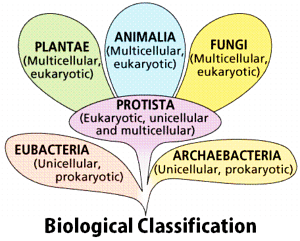Question:
Match the following:
Column - I Column II (a) Leishmiania-donavani (p) Malaria (b) Wuchereria-bancrofti (q) Amoebiasis (c) Trypanosoma-gambiense (r) Kala azar (d) Entamoeba-histolytica (s) Sleeping sickness (t) Filariasis
Match the following:
Column - I Column II (a) Leishmiania-donavani (p) Malaria (b) Wuchereria-bancrofti (q) Amoebiasis (c) Trypanosoma-gambiense (r) Kala azar (d) Entamoeba-histolytica (s) Sleeping sickness (t) Filariasis
Updated On: Apr 18, 2024
- a - r, b - t, c - s, d - q
- a - r, b - t, c - q, d - p
- a - s, b - r, c - q, d - p
- a - r, b - s, c - t, d - p
Hide Solution
Verified By Collegedunia
The Correct Option is A
Solution and Explanation
Answer (a) a - r, b - t, c - s, d - q
Was this answer helpful?
0
0
Top Questions on biological classification
- Red Data Book describes
- WBJEE JENPAS UG - 2022
- Biology
- biological classification
- Which of the following statements is correct?
- NEET (UG) - 2021
- Biology
- biological classification
- Match the compounds of Column I with their functions in Column II.
Column I Column II 1. Trypsin p. Fights infectious agents 2. GLUT - 4 q. Is an intercellular ground substance 3. Collagen r. Works as an enzyme 4. Antibody s. Enables glucose transport into cells - KCET - 2021
- Biology
- biological classification
- Match the organisms in column-I with habitats in column-II Select the correct answer from the options given below :-
- NEET (UG) - 2019
- Biology
- biological classification
- Match Column - I with Column - II.
Column - I Column - II Saprophyte - Symbiotic association of fungi with plant roots Parasite - Decomposition of dead organic materials Lichens - Living on living plants or animals Mycorrhiza - Symbiotic association of algae and fungi Choose the correct answer from the options given below :- NEET (UG) - 2019
- Biology
- biological classification
View More Questions
Questions Asked in KCET exam
- If \(\lim\limits_{x \rightarrow 0} \frac{\sin(2+x)-\sin(2-x)}{x}\)= A cos B, then the values of A and B respectively are
- KCET - 2023
- limits of trigonometric functions
- The Curie temperatures of Cobalt and iron are 1400K and 1000K respectively. At T = 1600K , the ratio of magnetic susceptibility of Cobalt to that of iron is
- KCET - 2023
- Magnetism and matter
- A particle is in uniform circular motion. Related to one complete revolution of the particle, which among the stataments is incorrect ?
- KCET - 2023
- Uniform Circular Motion
- The modulus of the complex number \(\frac{(1+i)^2(1+3i)}{(2-6i)(2-2i)}\) is
- KCET - 2023
- complex numbers
- The energy gap of an LED is 2.4 eV. When the LED is switched ‘ON’, the momentum of the emitted photons is
- KCET - 2023
- Semiconductor electronics: materials, devices and simple circuits
View More Questions
Concepts Used:
Biological Classification
The process of grouping living organisms into categories is called biological classification. The most modern 5-kingdom classification was put ahead by an eminent scientist R.H.Whittaker. The five-kingdom classification is based on the criteria like cell structure, mode of nutrition, body form, and reproduction. One of the most important characteristics of this system is that it follows the evolutionary sequence of living organisms. The organisms are classified into distinct taxa or levels like Kingdom, Phylum, Division, Class, Order, Family, Genus, and Species. The 5 kingdoms are as follows:




